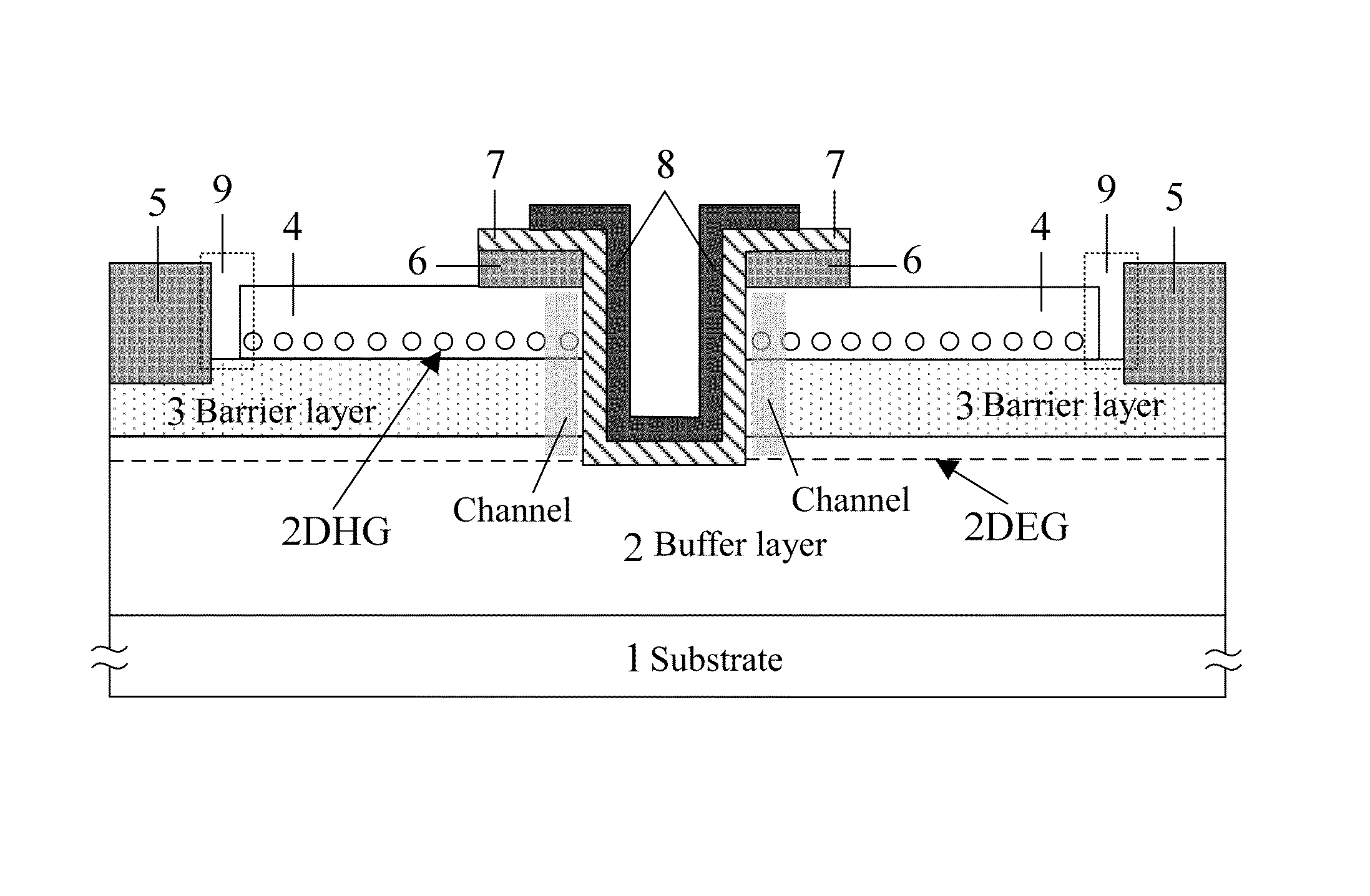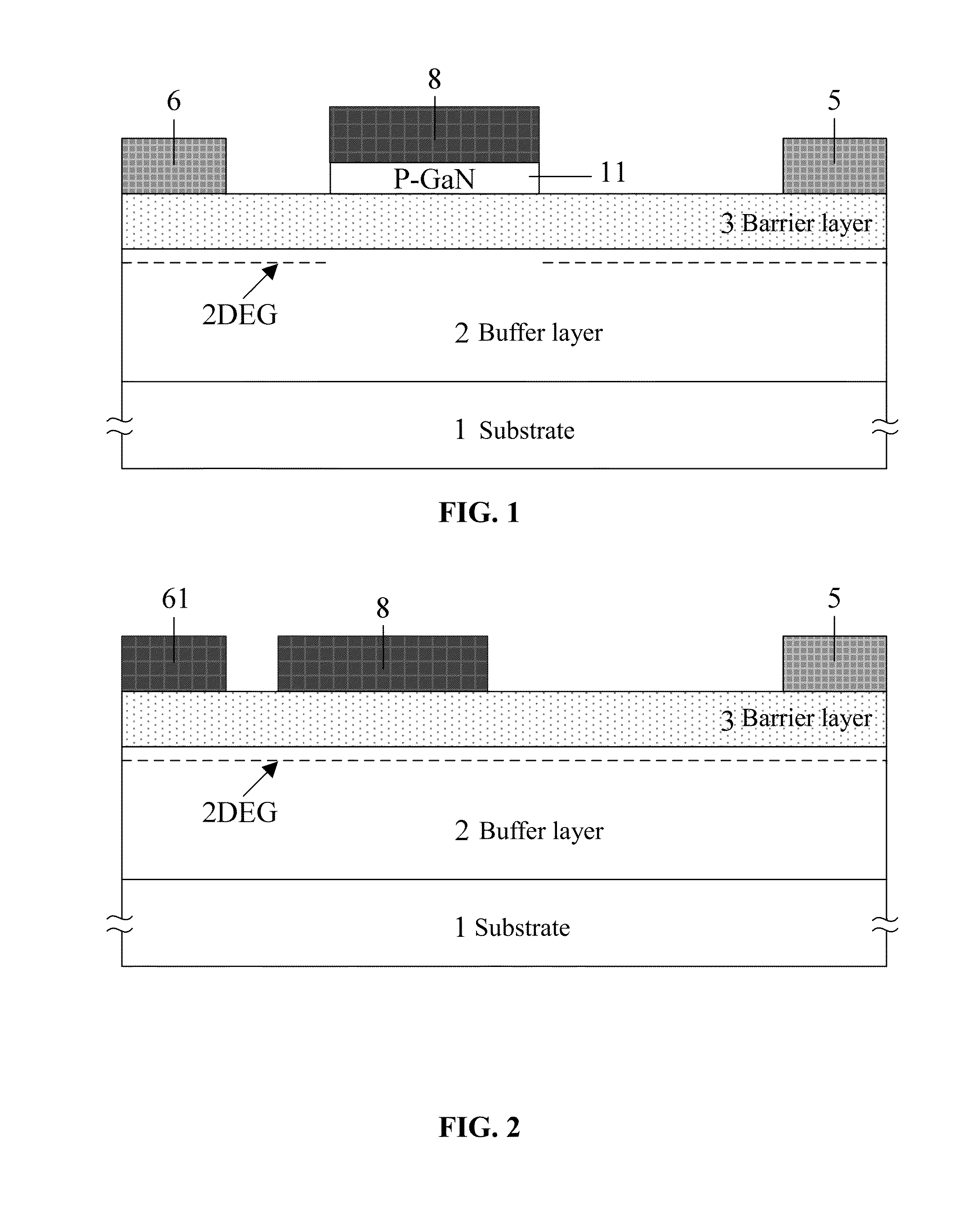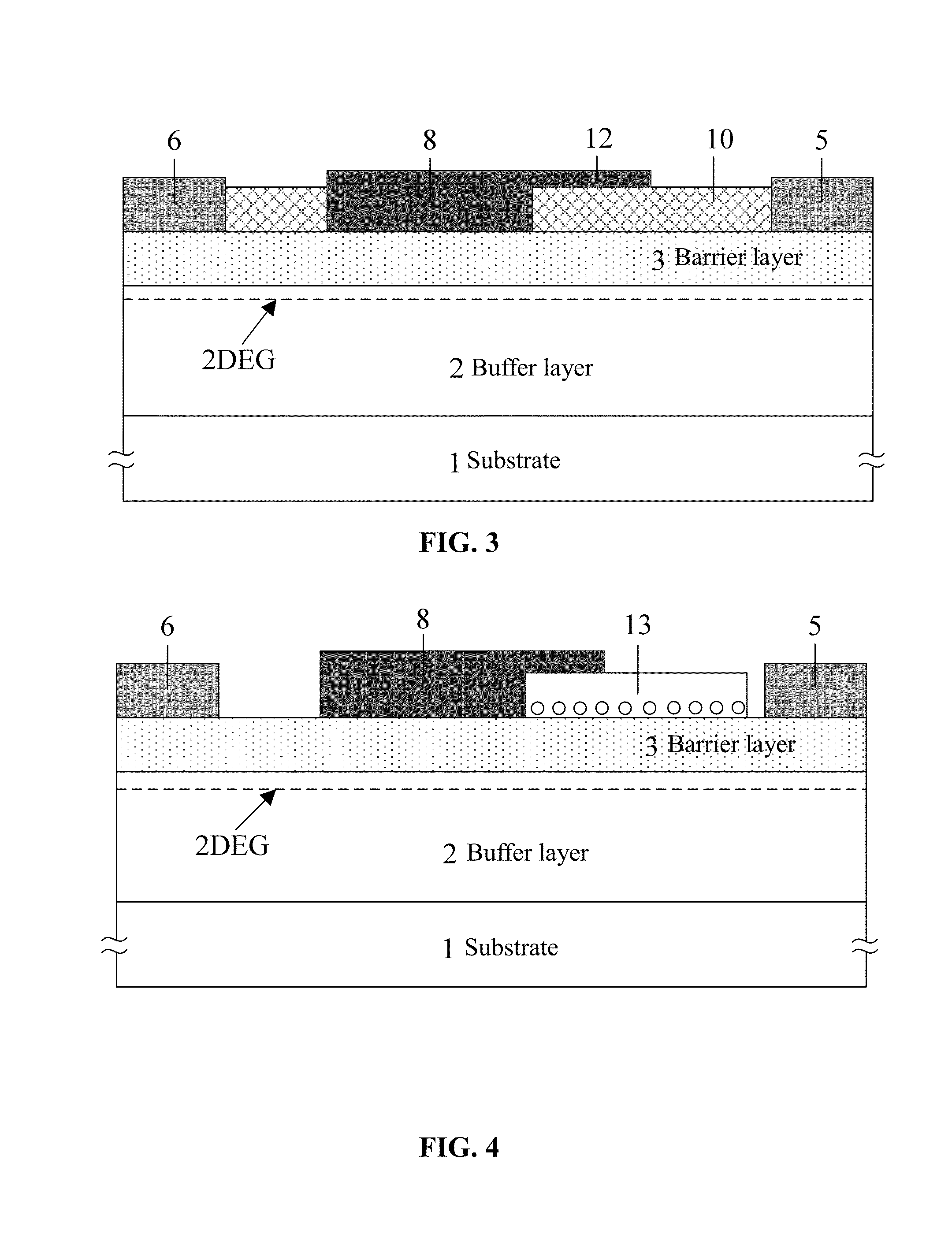Enhancement mode high electron mobility transistor
a high electron mobility, transistor technology, applied in the direction of basic electric elements, semiconductor devices, electrical equipment, etc., can solve the problems of limiting the maximum saturated output current of the hemt, difficult control of the threshold voltage of the enhancement mode hemt, complex doping process, etc., to facilitate the control of the hemt, improve the breakdown voltage, and prevent damage
- Summary
- Abstract
- Description
- Claims
- Application Information
AI Technical Summary
Benefits of technology
Problems solved by technology
Method used
Image
Examples
example 1
[0041]As shown in FIG. 5, an enhancement mode HEMT comprises: a substrate layer 1, a buffer layer 2 disposed on the substrate layer 1, and barrier layers 3 disposed on the buffer layer 2. An interface between the buffer layer 2 and each barrier layer 3 is provided with a first heterojunction comprising a 2DEG channel. Drain electrodes 5 are disposed at one end of upper surfaces of the barrier layers 3 and form Ohmic contact with the barrier layers 3. Reverse polarization semiconductor layers 4 are disposed on the upper surfaces of the barrier layers 3 and are able to produce inversed polarization with the barrier layers 3. A second heterojunction comprising a 2DHG is formed at an interface between each reverse polarization semiconductor layer 4 and each barrier layer 3. Source electrodes 6 are disposed at one end of upper surfaces of the reverse polarization semiconductor layers 4 away from the drain electrodes 5. Potential wells are formed at connecting interfaces between source el...
example 2
[0043]An enhancement mode HEMT of this example adopts polarized super junction tunneling structure and the hole blocking regions formed by ion implantation. Different from Example 1, the HEMT of this example adopts highly concentrated N-type ion implantation to realize the hole blocking regions 9 between the reverse polarization semiconductor layers 4 and the drain electrodes 5, so that the formation of hole conductive channels are prevented between the source electrodes and the drain electrodes. In addition, P-type doping regions are formed in one part of the reverse polarization semiconductor layers 4 between the drain electrodes and the source electrodes, so as to prevent the electron leakage from the source electrodes to the drain electrodes. Other structures are the same as those of example 1, as shown in FIG. 6. NP junctions formed between the drain electrodes and the source electrodes also function in supporting and voltage-resistance in the blocking state. The isolation mode...
example 3
[0044]The enhancement mode HEMT of this example adopts N-type doping in one part of the reverse polarization semiconductor layers 4 beneath the source electrodes. Compared with Example 1, one part of the reverse polarization semiconductor layers 4 beneath the corresponding source electrodes adopt the N-type doping, while other structures are the same as Example 1, as shown in FIG. 7. In one respect, the N-type doped parts beneath the source electrodes are able to form Ohmic contact between the metals of the source electrodes and the inverted polarization semiconductor layers. In the other respect, the N-type doping is able to regulate the concentration of the 2DHG so as to further regulate a threshold voltage. Other parts of the reverse polarization semiconductor layers 4 can be step doped or linearly doped, so that the horizontal electric field distribution of the drift region of the HEMT is further optimized and the voltage resistance is improved.
PUM
 Login to View More
Login to View More Abstract
Description
Claims
Application Information
 Login to View More
Login to View More - R&D
- Intellectual Property
- Life Sciences
- Materials
- Tech Scout
- Unparalleled Data Quality
- Higher Quality Content
- 60% Fewer Hallucinations
Browse by: Latest US Patents, China's latest patents, Technical Efficacy Thesaurus, Application Domain, Technology Topic, Popular Technical Reports.
© 2025 PatSnap. All rights reserved.Legal|Privacy policy|Modern Slavery Act Transparency Statement|Sitemap|About US| Contact US: help@patsnap.com



